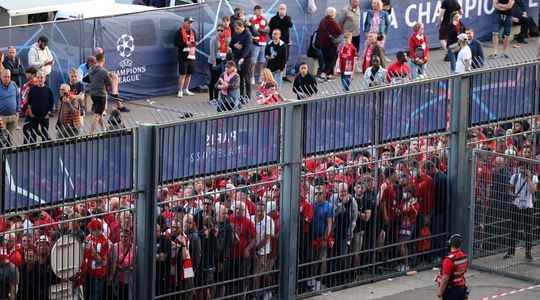While Liverpool received more than 5,000 testimonies from English supporters about the incidents at the Stade de France on the sidelines of the Champions League final on May 28, French senators heard police chief Didier Lallement and the Federation on June 9. French Football Federation (FFF) to shed light on the case. During the exchanges, the FFF revealed that the CCTV images of the Stade de France, for lack of having been requisitioned, were destroyed after a week, causing amazement. For public law lawyer Théo Clerc, this revelation raises questions about the retention period for these images and the positioning of justice.
L’Express: Does the law provide for the removal of CCTV images at the Stade de France after seven days?
Theo Clerc: In the events at the Stade de France, most of these took place around the stadium and particularly on the public highway. But incidents also took place inside the stadium.
With regard to events on public roads and around the stadium, the images from the cameras of the city of Saint-Denis and the Prefecture of Police are always kept until the expiry of a period of time. ‘a month. These videos are expected to be viewed by police and justice services due to complaints of physical assault and pickpocketing by supporters.
In the case of images within the Stade de France enclosure, it is considered that the installation of video surveillance is the responsibility of the operator in charge of site operation. The cameras then probably cover the stands, the corridors, but also part of the surroundings of the stadium because of the particular risks presented by this type of infrastructure: attacks, thefts, acts of terrorism. In this context, the operator who wishes to install a video surveillance system must then benefit from a prefectural authorization. This authorization conditions the operation and the conservation of the images. The private operator will not be able to keep these images beyond a period of one month due to personal data protection requirements (RGPD). In practice, the images are often kept for 7, 14 or 21 days.
How to explain the choice of this period of seven days?
This seven-day period was proposed by the stadium operator who installed the video surveillance system in its authorization request, and was accepted by the prefectural authorities. This delay can be explained simply by technical constraints: if there are a lot of files to keep for 30 days, this can have a cost. It may also be linked to the assessment made by the prefect when examining the request.
The prefect must have considered that this period was sufficient, especially since when there are excesses of supporters, the images are generally very quickly consulted by the justice system or the police authorities. We can still wonder about the relevance of this delay in view of the events committed during the Liverpool – Real Madrid match and the challenges that await Paris during the 2024 Olympic Games, with a much greater influx of supporters.
Are there exceptions to this deadline, when there is violence, for example, like at the Stade de France?
As a matter of principle and in the name of the protection of personal data, the retention period must always be the most appropriate and the consultation of these images restricted to authorized persons. In the events at the Stade de France, the traditional regulatory framework seems to apply and only referral to the police or justice services could have interrupted this period.
Why didn’t the police ask to see these images in this case?
It should be noted that anyone who consults video surveillance images must report their quality in a register kept by the system operator. In the context of the Stade de France events, it would indeed be interesting to know who consulted this register. What may seem surprising is that justice did not seem to seek to request these images. According to information from Worlda judicial police officer, who does not need to go through the prosecution to requisition them, made the request only last night, which also raises questions about the reason for this wait.
These images could indeed have made it possible to see the events from another angle, in this case that of the approach to the stadium or the interior. Once the images have been requested, it is also possible to keep them within a period of more than one month, until the investigation is completed. Perhaps justice was not seized for an incident inside the enclosure, but as a precaution the images of the cameras could nevertheless have been consulted within the framework of the investigations relating to the attacks committed on the outskirts of the stadium.
Could the responsibility of the State for “negligence” possibly be retained?
From the operator’s point of view, it did indeed comply with the prefectural authorization framework. But the fact that a judicial police officer asks so late to consult the images, while the FFF spoke of “very violent images”, indeed raises the question of the responsibility of the State.
